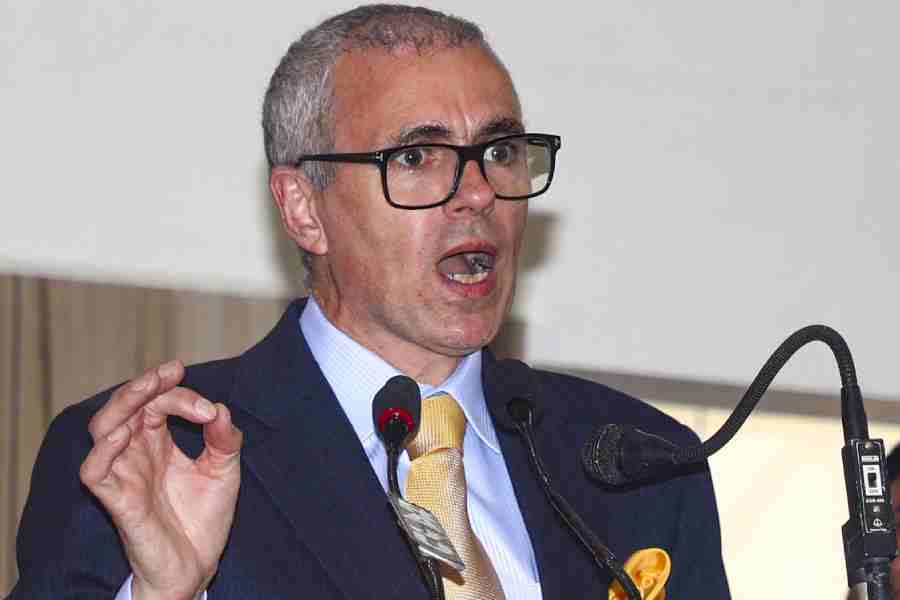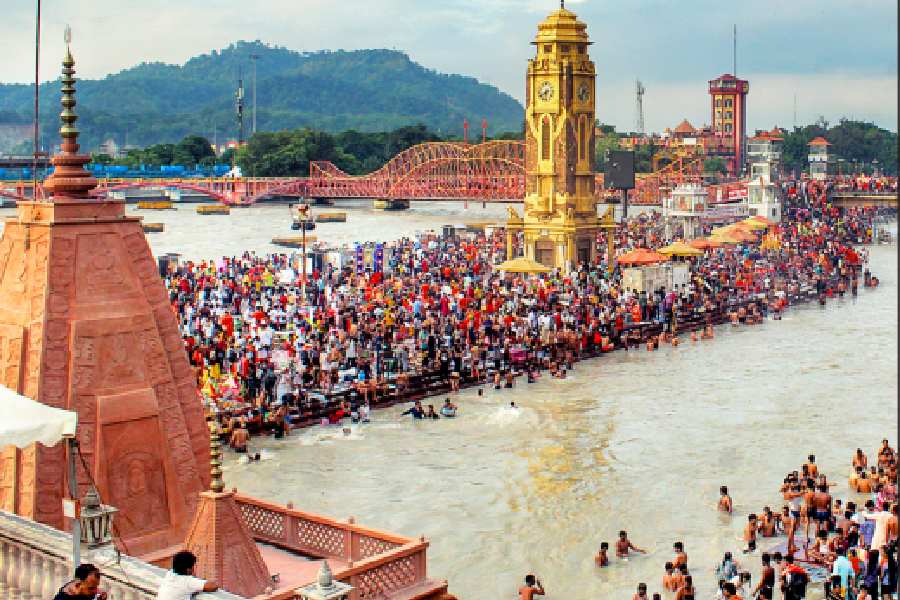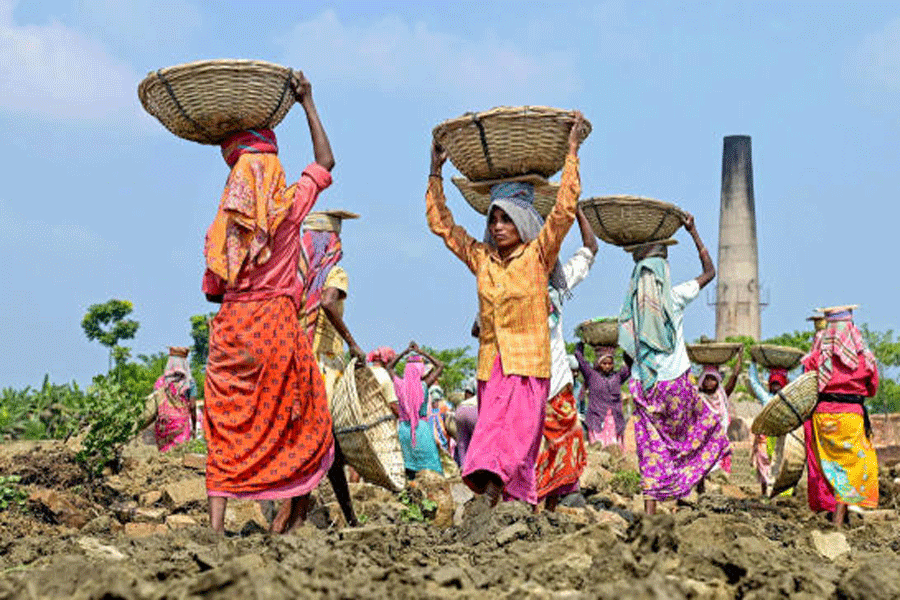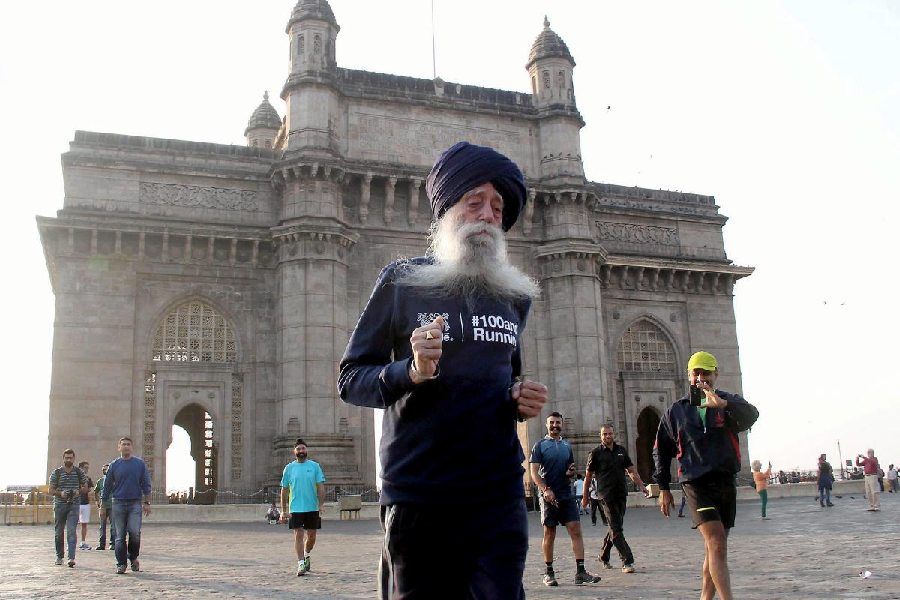| kalyani expressway | |
 |  |
For many living by this apology of a road, there’s little option but to endure it | |
| belghoria expressway | |
 |  |
| Waterlogged and cracked, the road has been further battered by the ongoing construction of a Metro rail line | |
Potholes as big as ditches, goods-laden trucks dangerously swerving left and right to keep at least one set of wheels on plain surface and commuters saying a little prayer before a bumpy trip to their workplace or home.
Worst than dirt-racing tracks, the abysmal condition of the two expressways connecting Calcutta with three national highways should be seen to be believed.
Metro took a trip down the two vaunted roads — showpieces gone waste because of neglect and poor maintenance.
Kalyani Expressway
More than half of the 32km two-lane road connecting Birati with Kalyani is dotted with countless craters.
In some stretches, it’s not possible to tell where the crater ends and the road begins.
The worst of all is the first 3.5km — called Madhyamgram Road — between Birati and Sodepur. Sheared off its “temporary” bitumen layer, pointed bricks lay exposed on this stretch. Not to mention the craters!
“It takes 25 minutes to cross this signal-free stretch,” said Gautam Das who endures this road every day to reach his workplace in Barrackpore. “Frequent lorry breakdowns on this broken road obstruct traffic movement every day,” he added.
Heavy vehicles carrying goods to North Bengal ply on this busy expressway, which meets NH34 at Kanpa near Kalyani.
Engineers of the Calcutta Metropolitan Development Authority (CMDA), which maintains the road, said the 3.5km stretch was built about three years ago but the bitumen layer was temporary because it takes a few years for the soil to “settle down”. “A road is properly paved later,” an engineer said.
Some patches got a coat of stone chips and bitumen some time ago, but the rain and heavy traffic washed them all away.
It is now being widened and repairs are supposed to follow simultaneously if at all the families who have been evicted to make way for the widening project are adequately rehabilitated. “We won’t create any obstruction if the CMDA rehabilitates the families,” said Sunil Chakraborty, the chairman of the North Dum Dum Municipality.
Belghoria Expressway
The four-lane, 8km artery links the junction of NH2 and NH6 near Dankuni with NH34 (Jessore Road) near the airport. Ongoing construction of the airport-Dakshineswar Metro line has rendered the flank for Jessore Road-bound traffic almost unusable. Deep and wide craters become small ponds after rain.
Accidents are common after sunset.
“This is a danger zone… a nightmarish ride. The craters are difficult to spot after a shower,” said a Baguiati resident who often travels to Bally on a two-wheeler.
The National Highways Authority of India (NHAI) maintains the expressway, while the 1km stretch where Metro pillars are being built is the responsibility of the Rail Vikash Nigam Limited. “We have been pushing them (RVNL) for repairs. They will start work once the rains stop,” an NHAI engineer said.
Potholes and hillocks
Looking back, three years later, the one-hour commute from my home to work used to be a pleasure…The road surface a little rough, but not too bad. I could read a book in my car. A Tata Indica or a Maruti Zen; rented from an agency. Then the rains came. One little pothole. The next morning, a few more. In less than a month, I had to give up the road and take the train instead. Then one day, the driver said the road has been repaired. I was back on the road every morning and evening. One hour each way to work and back home. Soon, I shall be back to using the train to work. The potholes have become non-negotiable after the rains. Some are so large that a Nano would drown.
Watching out of the window of my car on my way to work about two months ago, I again saw the birth of a hillock! The next day, I saw two more hillocks. I also noted that the hillock that was born yesterday had grown in height and size. Over the next days, more hillocks were born. The process continues to this day. Then the rains came. The hillocks started to melt. Like molten lava, garbage started to run into the adjacent water bodies. The hillocks are piles of garbage. If you are not riding along Kalyani “expressway” in an air-conditioned car with the windows up, you had it!
Partha Majumder
The writer is director, National Institute of Biomedical Genomics, Kalyani











